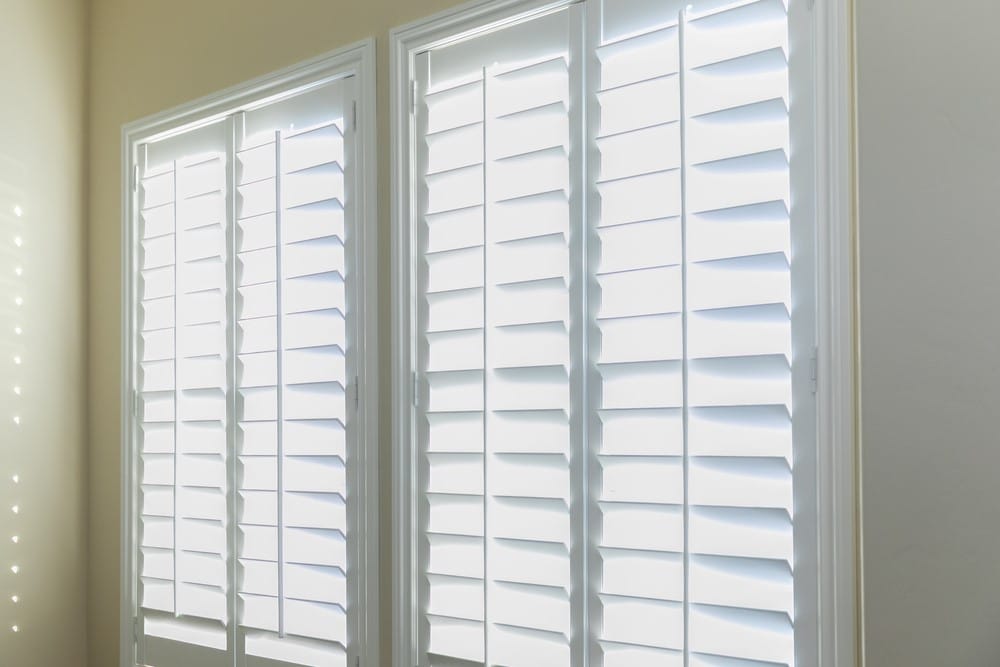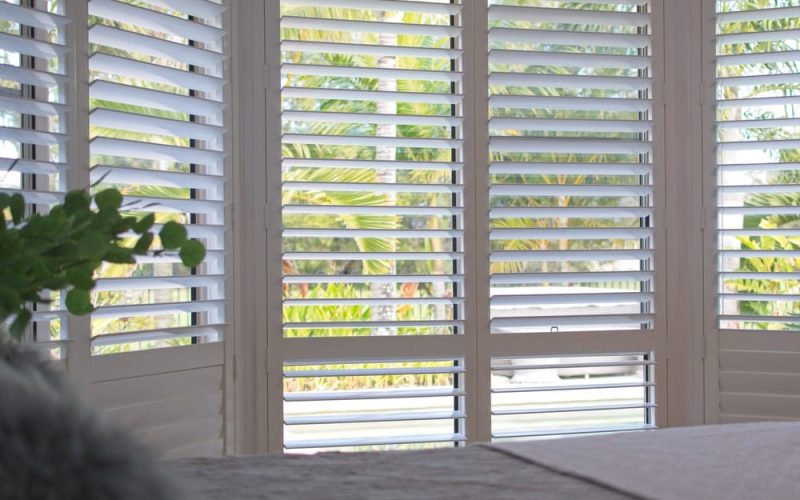How Plantation Shutters Works
A Tilt rod is basically the material and mechanism that is used to angle your slats and dictate the natural lighting of your room. It is also essential for the overall aesthetics of the shutters and can be a standout feature. Tilt rods can be either visible or hidden. Before deciding on which look you like best, center-tilt shutters or hidden tilt shutters. Let’s first start with the fundamentals of a plantation shutter.
How do the moving parts work together? The first thing most people notice about shutters are the slats (also called louvers), that open and close to allow natural light to filter into the room when they are opened or to give privacy when they are closed.
These slats overlap one another by about ½” creating a seal that insulates your home and blocks light. For a center tilt operation, the tilt rod is located down the center of the shutter. But for a hidden tilt operation, there is no tilt rod. Let’s get down now to what makes each option great.

Center Tilt Shutters
The center tilt shutters are the traditional style featured on classic plantation shutters. They are perfect for colonial-style or cottage-style homes. The center-tilt, that runs down the center of the shutter, is attached to the slats with heavy-duty staples, which allows it to move them to the open position, closed position, or anywhere in between to allow the natural light and privacy to enter the room.
This easy operation makes center tilt shutters a popular choice because it makes opening and closing the shutters effortless. But, as with any product, wear and tear occur, so, if you can foresee the potential threat of children or pets damaging this alluring center-tilt shutters, we would suggest the next option.

Hidden Tilt Shutters
Hidden tilt shutters are a more popular choice with those who don’t want to see a tilt rod running down the front of their plantation shutters, which provides a modern look, and with the same easy operation.
These shutters have the mechanism to tilt the slats running down the center of the plantation shutter as a tilt rod, but this mechanism is actually hidden behind the shutter. You can adjust the shutters open, closed, or anywhere in between by using your hands. Gently adjust the slats to achieve the amount of light that you desire.
Center Tilt vs. Hidden Tilt Shutters: The Difference
The option you choose is based entirely on your wants and needs.
Center tilt:
- Has a tilt rod running down the center of the plantation shutter.
- Operates by moving the tilt rod up or down to close and open the slats.
- It’s easy to fix and maintain.
- There is no additional charge for central tilt shutters.
- It may be tempting for young children and pets to mess around with, which could leave damage over time.
Hidden tilt:
- Has its tilting mechanism hidden in the back of the plantation shutter, making it perfect for minimalists.
- Operates with a simple touch of your hand to open and close the slats.
- It’s a popular choice for those who wish to have a modern, clean look to their shutters.
- Hidden tilt may not be ideal for homeowners who prefer a more traditional design of plantation shutters.
- It comes at an extra cost compared to the visible tilt rod.
With those points, finding the best tilt rods for the best plantation shutters should be easy. If you need help deciding, make sure you get in touch with Ambiance Window Coverings experts today for a free consultation and advice.

